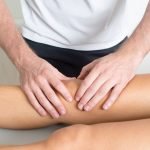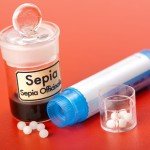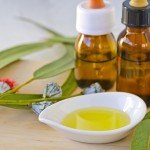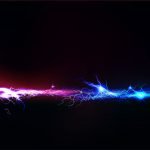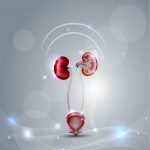A Case of Palliative Care
Paul Theriault, ND
M presented as a 43-year-old male on July 31, 2012. He had been diagnosed with Coffin-Lowry syndrome and was currently confined to a wheelchair due to a spinal cord injury and the physical deterioration caused by the syndrome. He had a history of drop seizures, starting at 1 year old and lasting into his mid-30s. There had been many injuries resulting from the seizures, including knocking out teeth, breaking his nose, breaking his hand, and many head injuries requiring sutures. He had also developed spinal stenosis. In 2002 he had decompression surgery to alleviate the pressure on the spinal cord. At that time the surgeon was able to remove some of the calcification around the spine, and from that time forward the seizures were primarily absent. As a teenager he had experienced some sexually exploitive behavior by a teacher at the school he was attending.
As a result of swallowing difficulties, he was currently eating a proprietary meal replacement product through a G-tube. As a result of his spinal injury, he had very little mobility in either his lower or upper body. He had suffered pneumonia 8 times within the previous 6 years, each time requiring hospitalization and IV antibiotics for significant periods. He also had suffered repeated urinary tract infections (UTIs), which also required hospitalization and IV antibiotics. At times M would need to spend significant time in the Foothills hospital in Calgary. He also has significant sleep apnea and had been prescribed a BiPAP machine, which he didn’t like because of the irritation to his nose resulting from the mask; as a result, he was not currently using it.
M’s meds included valproic acid, gabapentin, lansoprazole, loratidine, levothyroxine, sucralfate, albuterol, and acetaminophen [PRN]. His supplements included a liquid iron/herbal formula, N-acetylcysteine, vitamins C and D, probiotics, and a mixed formula for joint health. His staff used Aloe vera, tea tree oil, Hamamelis virginiana, and vitamin E to control chafing at his G/I entry.
M had a close relationship with his family, and lived in his own home in NW Calgary with his long-term roommate.* They were assisted by long-term, skilled, and caring staff. When healthy, M had a vibrant and fun-loving personality. He loved playing tricks on his staff and friends, going to rock concerts, teasing his roommate, and flirting with his, at last count 5 (!!), girlfriends at his day program. When in good health, M had healthy sexual desires, and expressed himself sexually appropriately.
In recent months, his family and staff had noticed M having less energy, being less willing to go out, sleeping more, and taking less joy than normal in his life. He no longer wished to go out to concerts and parties with friends, and appeared to be withdrawing slowly from any type of social interaction. His lungs had begun to fill with fluid, which wasn’t clearing. His pulmonologist and family physician had told M’s family that M’s time was likely limited and that he would likely make his transition soon.
The family of M had brought me to him in order to ease his suffering before his death. They wanted him to have as comfortable a process as possible.
Analysis
This case presents us with a large number of variables. The case began as a very rare genetic disorder with developmental delay, and was complicated by multiple injuries, repeated illnesses, and trauma. It appears that his body was losing the ability to cope with his repeated illnesses, and was appearing likely to pass soon due to a respiratory illness.
Further complicating M’s case was the large number of drugs he had been taking for many years, as well as the supplements he was on. Any therapeutic intervention I undertook would have a high potential of interacting with M’s drugs. His family had already given him many basic supplements, such as multivitamins, probiotics, vitamin D, and several other common naturopathic interventions.
If we examine the therapeutic hierarchy by Zeff, Snider, and Myers,1 we see that the first step of therapy is to create the environment for health. In M’s case, this proved challenging. I am unaware of any naturopathic substitutes for the meal replacement he was receiving through the G-tube, and M’s lack of ability to swallow would prevent much dietary modification.
As such, I chose to stimulate M’s vital force and administer a homeopathic remedy. I prefer to work with the sensation method of Divya Chhabra,2 and the source method of Irene Schlingensiepen-Brysch.3 However, M was insufficiently lucid to be able to work productively with such a heavily verbal method. As a result, I focused on the distinctive issues in M’s case.
Homeopathic Remedy
The distinctive traits of M included his fun-loving personality, the seizure disorder in childhood, delayed development, and decreased immunity, leading to repeat infections. These characteristics as a whole led me to the Baryta group of remedies. However, M’s fun-loving personality and more prominent sexual dimension led me to a closely-related animal remedy: Bufo marinus.4
In retrospect, as I have begun working more extensively with animal remedies,** M appeared to fit the picture of the amphibian remedies perfectly. His fun-loving nature, impulsivity, and independence matched very well with these remedies, which also have a sexual emphasis.
I began the patient on Bufo 6C in liquid, 1 single drop. We would meet the next week to evaluate his response.
Second Visit, 1 Week Later
The weekend after the first visit, I was called by the staff at M’s home. He had developed several large blisters on his elbows, 1-3 cm in diameter and filled with a clear fluid. No redness, elevated temperature, or other systemic signs were observed.
The staff were advised to leave the blisters in place. When they popped, the blisters were to be cleaned gently with water, covered with gauze and a tensor bandage, and permitted to discharge fluid naturally. The staff were to monitor M’s temperature and inform me if it spiked.
A home visit was made on August 7, 2012. In this visit the staff and parents reported that M had increased energy and enthusiasm for his daily activities. Some of his blisters had popped (see Figure 1) and the resulting ulcers continued to discharge a foul fluid. He also developed a rash on his right elbow, which disappeared after 3 days. His mother reported that M had never had blisters of this type before.
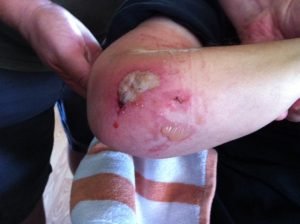
Figure 1. Blisters on Elbow
A homeopathic preparation containing Hypericum and Equisetum was prescribed for topical application on any rash that emerged. If the resulting wounds from the blisters began to look red, topical antibiotics could be applied. If M’s temperature spiked, the staff were to call me immediately and seek emergency care. Bufo 6C was prescribed, to be taken as a liquid 1 gtt per week.
Healing Crises
While reactions like M’s are quite rare, they do occur and are understandable within the framework of naturopathic theory. The purpose of a homeopathic remedy is to stimulate the vital force of the body to correct itself, throw out toxins, and promote immune activity against pathogens.
Depending upon the state of the body, the amount of stored toxicity, and the vitality of the patient, the healing response can take a number of forms. Classically, fevers, acute infections, diarrhea, and skin rashes are most common.5 However, the work of Gerard Gueniot sheds light upon this phenomenon. Gueniot identifies the most toxic patients as syphilitic, stating that these patients tend to blow toxins outside of themselves via ulcers.6
In this case, we have a patient whose response to a remedy is an increase in general vitality, concurrent with ulcerations and fluid discharges. It is reasonable to suspect that M had been responding well to his remedy, his vitality was increasing, and that these ulcers represented M’s vitality pushing out toxins and metabolic wastes.
Third Visit, 1 Week Later
A home visit was made on August 14, 2012. The staff reported no changes. M’s energy levels had continued to increase. No other new symptoms were noted. Weekly dosing of Bufo 6C was continued.
Three days later, the coordinator of M’s home called. M had developed 2 large blisters on his back; one was approximately 1 cm in diameter, and the other approximately 2×4 cm. His mood had continued to improve, along with his energy.
I prescribed gauze, to cover the blisters and to be loosely secured with surgical tape. The same monitoring procedures were instituted that had previously been used for the elbow blisters and ulcers.
Fourth Visit, 1 Week Later
At a visit on August 21, 2012, it was noted that the patient’s higher levels of energy had continued. His back blisters had broken (see Figure 2) but had not become infected, similar to the elbow blisters. An iridological overview was taken, leading to suspicions of liver toxicity.
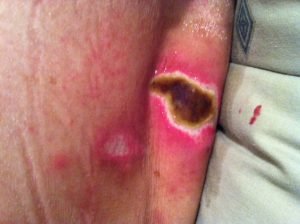
Figure 2. Popped Blisters on Back
M’s respirologist had prescribed a scopolamine patch and was suggesting using the BiPAP machine once more. His routine chest X-rays had also picked up [without my knowledge at the time] a significant clearing of fluid from the lungs.
Given the iridological suspicion of liver toxicity, and the long-term use of valproic acid, I strongly suspected liver toxicity to be an issue for M. I prescribed 1 gtt per day of Juniperus communis in the form of a gemmotherapy extract, along with an alkalinizing bath soak; 3 tbsp of mineral salts were to be added to each bath, with 20 minutes allowed per soak every other day.
Fifth Visit, 2 Weeks Later
A home visit was made on September 4, 2012. Since the prior visit, M’s bowel movements had changed (having not previously shifted since the beginning of treatment). He was having up to 5 very foul fluid bowel movements per day. He also had become somewhat quieter, and had less of a sense of humor than normal.
On examination, the 2X4 cm sore on the right side of his mid-lower back was oozing. The sore had a red border, but no systemic signs of inflammation were present (ie, temperature was normal). M was indeed quieter during this visit. I did acupuncture on points UB-23, and 52 on the right side (the left being the site of the sore) in order to stimulate the kidneys, and UB-18 and 47 on the right side to stimulate the liver. Lv-3 and Ki-3 were done bilaterally for the same purpose. The patient fell asleep 3 times during the treatment, which was unusual for him. I also used ear seeds on the 3 phase liver points bilaterally, according to the French system of auricular acupuncture.*** To compensate for the increased loss of fluids through M’s bowels, I prescribed increased isotonic fluids, to be given through his feeding tube.
Discussion
Considering M’s history of UTIs, it is fascinating that his blisters and ulcers occurred on his back over the urinary bladder points associated with the kidney. I continued with liver support, and via auricular acupuncture, added in a more persistent stimulus for the body to correct itself.
The increased bowel movements suggested that the patient was beginning to detoxify via his bowels rather than through ulceration, which was an excellent development.
Sixth Visit, 1 Week Later
On September 11, 2012, another home visit was conducted. The patient had continued to have multiple liquid bowel movements. He had been speaking more clearly, and had improved since last week in terms of energy. He had attended a party, and stayed up late without any fatigue. His lips were also less chapped and his limbs were looser and more relaxed.
Upon physical examination, M’s eyes had visibly changed from brown to a yellowish tone [my apologies for not having pictures of this]. This (a sign of acidity in iridology, and traditionally associated with kidney dysfunction) and the locations of his ulcers led me to suspect that his kidneys would be next to go through a healing crisis. His back ulcers had also shrunk somewhat, and his arm ulcers had healed completely.
I gave M body acupuncture on UB-23, 52, 18, 47, Lv-3, and Ki-3. I also stimulated kidney points on both ears in all 3 phases according to the French system of auricular acupuncture, in order to stimulate kidney function.
Four Days Later
On September 15, 2012, M’s caregivers called to report that M was passing blood in his urine. I immediately referred him for emergency care, fearing another UTI. M’s mother, however, suspected it was another level of clearing, so kept him at his home for a few more hours. Within 6 hours, M’s urine returned to normal. Upon further examination of his urine bag (see Figure 3), it became apparent that the redness derived not from blood, but rather from an unknown red sediment. The sediment was flushed before it could be analyzed so I will leave it up to my readers to speculate as to its composition. I suspect the red sediment was a discharge of some sort of accumulated waste matter from his kidneys.
Three Days Later
On September 18, 2012, during an in-person follow-up, M’s staff reported a white discharge from his penis, which was gumming up his external catheter. They also said that M was coughing up a lot of phlegm. His urine was now dark and odorous.
The increased amount of phlegm alerted me to the possibility that M’s remedy might no longer be effective at the current dosage. I was also concerned that M’s might go through a crisis with his lungs, as he had with his urinary tract and bowels. To help drain his lungs, I prescribed a mixed homeopathic for skin and respiratory problems, and I increased his dosage of Bufo 6C to 1 gtt twice weekly. The staff of M’s group home were encouraged to do mechanical drainage and suction of any phlegm expelled.
The next visit revealed a reduction in coughing, and a decrease in the white discharge.
Further Visits
From September 2012 to January 2013, M’s condition remained largely stable. He continued to experience excellent energy levels, improved interest in his hobbies, and a high quality of life. During this time he attended rock concerts, flirted with his girlfriends, and even invited me to his staff Christmas party. He was an impeccable host, ordering that his mother bring me many more drinks than I had planned on consuming!
Acupuncture – both body and auricular – was given weekly or biweekly, depending on his TCM pulses. The Bufo 6C dosing was gradually increased to 1 gtt daily, then to 1 gtt of 30C daily. Loose bowels continued despite attempts to stabilize them with Vaccinium vitis-idaea and Juglans regia as gemmotherapy extracts. The white discharge also continued intermittently, usually retreating quickly following a single liquid dose of Medorrhinum 6C. M’s lungs remained clear of phlegm until February of 2013.
Acute Illness
On February 3, 2013, M’s mother called to inform me that he had begun to cough again. He had a great deal of mucus, and was displaying similar behaviors as with his previous bouts of pneumonia, though no fever was present. I advised his mother to follow their usual procedures concerning hospitalization with M, and prescribed Mercurius 30C based on the available symptoms. I planned to visit M in person the next day.
On February 4, 2013, I was informed that M was in the hospital. His staff and mother noted a continued deterioration, and had brought him there during the night. He was afebrile, but expectorating a great deal. The physicians at the Calgary Foothills hospital diagnosed pneumonia and began him on IV antibiotics.
I visited the patient in his hospital room the next day. I chatted briefly with his mother. We both were optimistic about this bout of illness. I presented M’s mother – a very gifted body worker herself – with some ear seeds to use as she saw fit on an intuitive basis. I would be on vacation over the following several days, and trusted fully that M would get the best of care in a hospital setting.
During this visit I took time to connect with M. He held my hand and made extensive eye contact. This was quite unusual for him, and I noted it mentally.
One week later, M lost consciousness, and his mother declined to have him resuscitated, due to the trauma and pain that would result. He had been lucid up until his last few hours, and was happy and full of enjoyment of life until he lost consciousness.
Discussion
Naturopathic medicine, as of yet, does not have any well-developed discourse on the death process. I do hope that this article will begin this discourse, and stimulate discussion around the role of naturopathic medicine in palliative care.
M’s case was a complex one with many treatment strategies and modalities. However, his case revolved around stimulation of the vital force and promotion of detoxification. This process enabled M to have an extremely high quality of life in his last months of life, followed by a rapid and relatively painless death. Compared with the all-too-common mortality in Western societies that involves multiple pathologies, gradually decreased functioning, decreased lucidity, and pain and suffering before death, M’s process seems far superior.
It is my contention that the death process should be as natural and painless as possible. Ideally, we as humans should live to a ripe old age and die very rapidly, with a minimum of pain, suffering, and fear, having enjoyed a high level of function until the very end of our lives. In this sense, death can be viewed as a physiological process for the termination of life. It may seem strange to think of a physiological process involving the termination of life, but having a view of life extending past physical functionality makes this interpretation more sensible.
The vital force uses the body as a temporary vehicle, inhabiting it briefly before departing to its next destination. A physiological process that supports this makes sense when we look at the orderliness of the vital force in other spheres, such as birth, maturation, reproduction, and immunity.
In our contemporary world, we enter into old age typically burdened with many medications and diseases. I suspect that this drug and disease burden interferes with the natural process of death, making it far slower and more painful. Instead of a brief and painless death, we endure months or even years with terminal diagnoses, and modern care designed not to enhance life, but to postpone death, no matter the physical, emotional, or economic cost.
As this case demonstrates, stimulating the vitality does not mean that patients experience low-quality lives of greater length. Typically, patients experience a period of higher quality of life, often of greater duration, followed by a rapid and relatively pain-free decline into death. M had a wonderful 6 months before his passage. How many more patients can find their transitions to the next life eased by naturopathic care? How many of us, as naturopathic doctors, increasingly assuming primary care roles, will be called upon to ease suffering in just this way?
Footnotes:
* Unfortunately, M’s roommate was passed away within a year of M.
** My work on systematics of animal remedies is still in progress. I anticipate publishing a book on the subject within 5 years, and a preliminary table being published within the next year. Please see my website www.tableofanimals.com for updates and publications.
*** For more extensive exploration of the French system of auricular acupuncture, I recommend training with Mikhael Adams, ND, as well as reading Bryan Frank’s book Auricular Medicine and Auricular Therapy: A Practical Approach or Beate Strittmatter’s book Ear Acupuncture: A Precise Pocket Atlas Based on the Works of Nogier/Bahr.
References:
- Zeff J, Snider P, Myers SP. A Hierarchy of Healing: The Therapeutic Order: A Unifying Theory of Naturopathic Medicine. In: Pizzorno JE, Murray MT, eds. Textbook of Natural Medicine. 4th St Louis, MO: Elsevier; 2013. Available at: http://tinyurl.com/j6hnrj4. Accessed August 5, 2014.
- Chhabra D. Seminars presented in 2008, 2010, 2012. Presented by the New England Homeopathic Academy.
- Schlingensiepen-Brysch I. The Source in Homeopathy: Cosmic Diversity and Individual Talent. Source-based Homeopathy Vol 1. Kandern, Germany: Narayana Publishers; 2009
- Murphy R. Nature’s Materia Medica. Blacksburg, VA: Lotus Health Institute; 2006.
- Boyle W, Saine A. Lectures in Naturopathic Hydrotherapy. Eclectic Medical. Sandy, OR: Buckeye Naturopathic; 1988.
- Gueniot G, Tondelier P. From Natural Medicine to a Medicine of the Individual. Brussels, Belgium: Editions Emyrss; 2010.
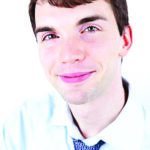 Paul Theriault, ND, graduated from the Canadian College of Naturopathic Medicine (CCNM) in 2010. He maintains a practice in Calgary that is dedicated to chronic diseases, elimination of blockages to healing, digestive problems, and autism. He uses homeopathy, constitutional hydrotherapy, drainage, and auricular acupuncture as his main tools. Dr Theriault is the author of one book about triturated remedies in homeopathy (A New Era: Homeopathy and the Human Spirit), and a second book systematizing the animal remedies in homeopathy (The Table of Animals). His websites include drpaultheriault.com and tableofanimals.com.
Paul Theriault, ND, graduated from the Canadian College of Naturopathic Medicine (CCNM) in 2010. He maintains a practice in Calgary that is dedicated to chronic diseases, elimination of blockages to healing, digestive problems, and autism. He uses homeopathy, constitutional hydrotherapy, drainage, and auricular acupuncture as his main tools. Dr Theriault is the author of one book about triturated remedies in homeopathy (A New Era: Homeopathy and the Human Spirit), and a second book systematizing the animal remedies in homeopathy (The Table of Animals). His websites include drpaultheriault.com and tableofanimals.com.




